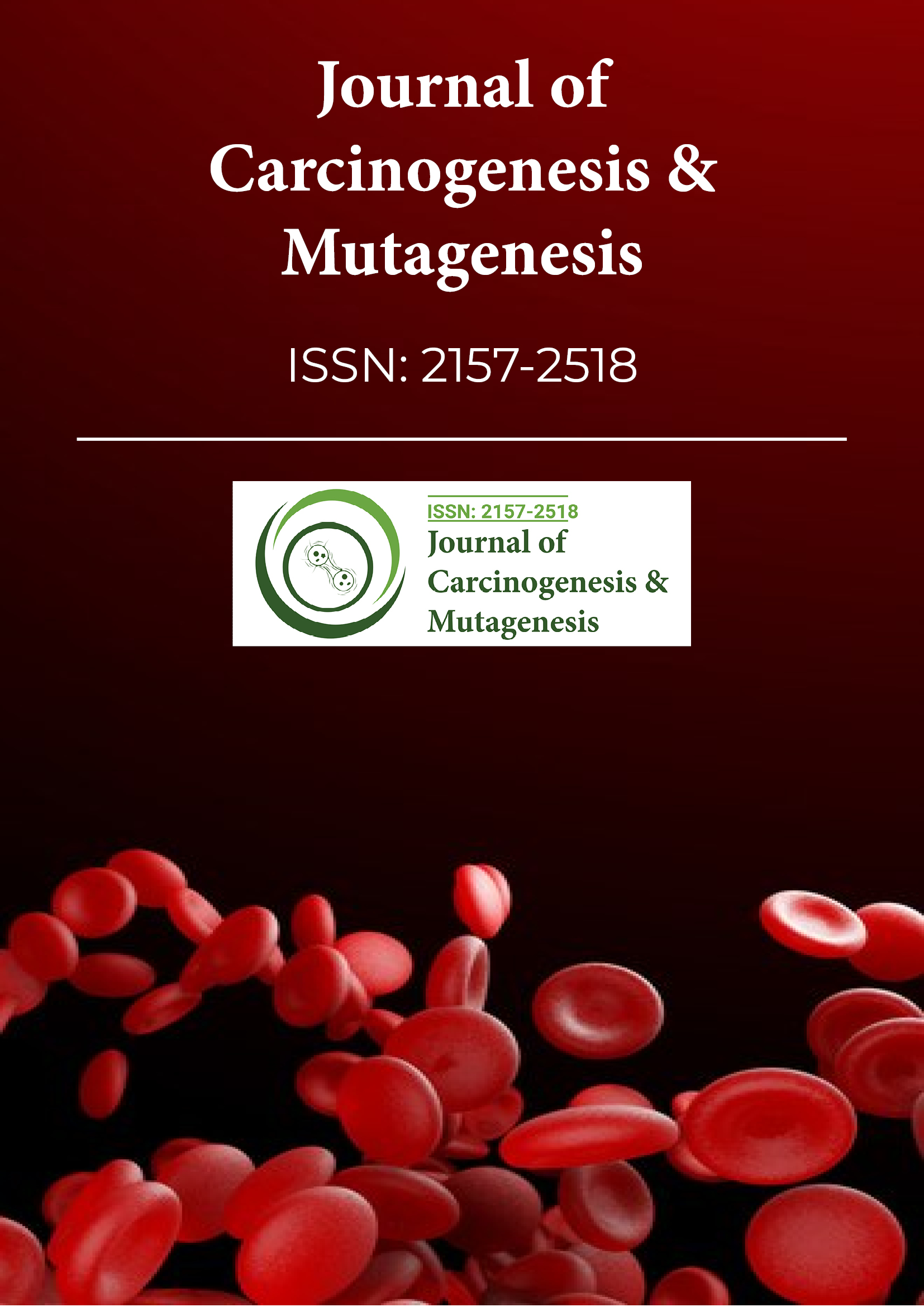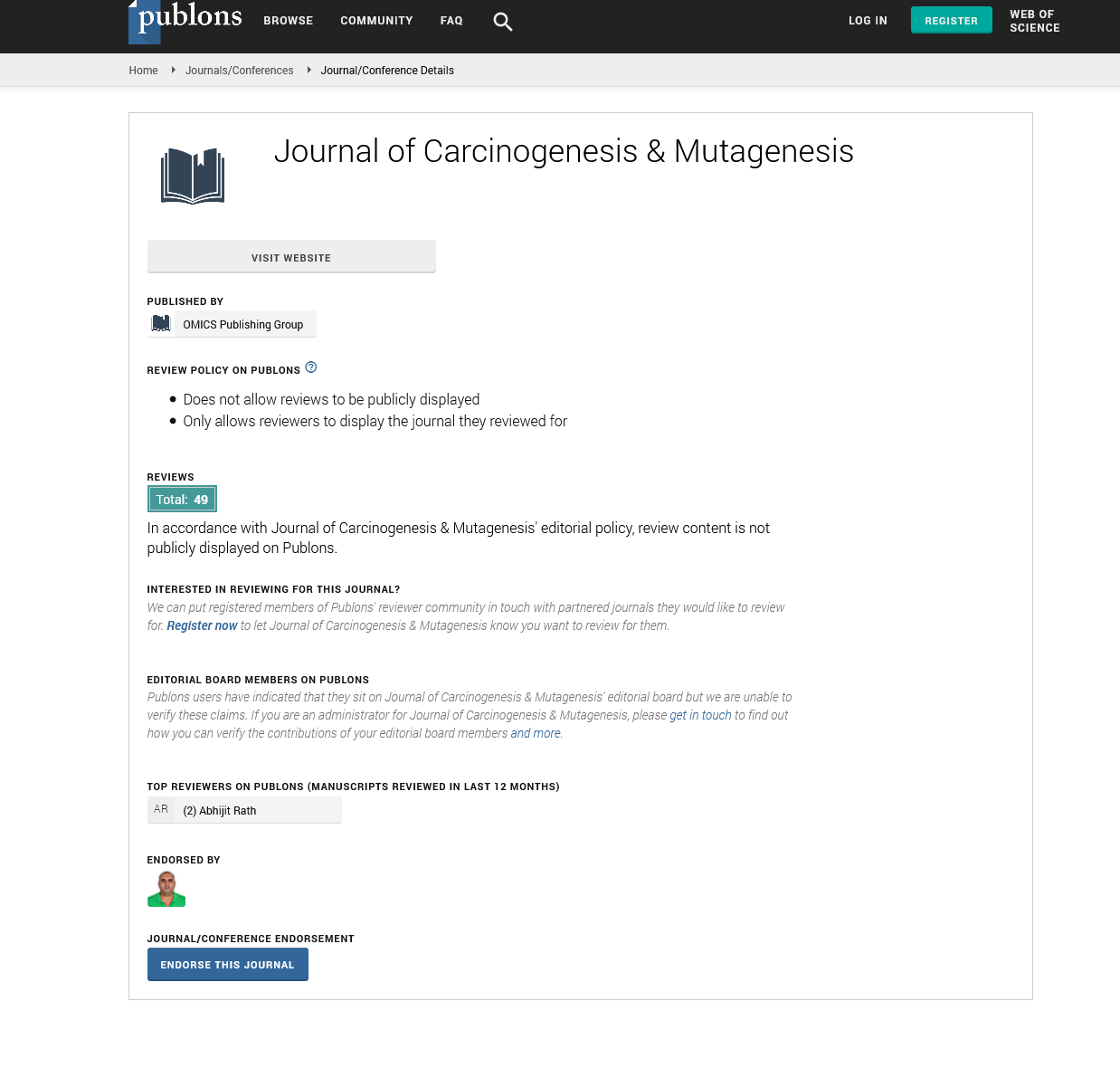Indexed In
- Open J Gate
- Genamics JournalSeek
- JournalTOCs
- Ulrich's Periodicals Directory
- RefSeek
- Hamdard University
- EBSCO A-Z
- OCLC- WorldCat
- Publons
- Geneva Foundation for Medical Education and Research
- Euro Pub
- Google Scholar
Useful Links
Share This Page
Journal Flyer

Open Access Journals
- Agri and Aquaculture
- Biochemistry
- Bioinformatics & Systems Biology
- Business & Management
- Chemistry
- Clinical Sciences
- Engineering
- Food & Nutrition
- General Science
- Genetics & Molecular Biology
- Immunology & Microbiology
- Medical Sciences
- Neuroscience & Psychology
- Nursing & Health Care
- Pharmaceutical Sciences
Perspective - (2025) Volume 0, Issue 0
Epidemiological Trends and Therapeutic Advances in the Management of Adenocarcinoma
Claudio Scafoglio*Received: 01-Mar-2025, Manuscript No. JCM-25-28941; Editor assigned: 03-Mar-2025, Pre QC No. JCM-25-28941 (PQ); Reviewed: 17-Mar-2025, QC No. JCM-25-28941; Revised: 24-Mar-2025, Manuscript No. JCM-25-28941 (R); Published: 31-Mar-2025, DOI: 10.35248/2157-2518.25.16.003
Abstract
Description
Adenocarcinoma is a type of cancer that begins in the glandular tissues of the body—tissues responsible for producing and secreting various substances such as mucus, enzymes, and hormones. It is one of the most common forms of cancer, especially in organs like the lungs, colon, prostate, breast, pancreas, and stomach. Although adenocarcinoma can occur in different parts of the body, it shares certain cellular characteristics due to its origin in epithelial cells with glandular properties.
The development of adenocarcinoma involves genetic mutations that cause normal glandular cells to grow uncontrollably. These abnormal cells can accumulate to form a tumor, which may invade surrounding tissues and spread to distant organs through the bloodstream or lymphatic system. The exact causes vary depending on the organ involved, but certain risk factors are consistently associated with an increased likelihood of developing adenocarcinoma. These include tobacco use, alcohol consumption, poor diet, obesity, lack of physical activity, environmental exposures such as pollution and industrial chemicals, and inherited genetic mutations. A family history of certain cancers can also increase the risk.
Adenocarcinoma presents differently depending on the organ in which it develops. In the lungs, it is the most common subtype of non-small cell lung cancer and tends to grow in the outer areas of the lungs, often going unnoticed until it has advanced. In the colon or rectum, it often starts as a small polyp that gradually becomes cancerous, potentially causing symptoms such as blood in the stool, changes in bowel habits, and abdominal discomfort. In the breast, adenocarcinomas usually begin in the ducts or lobules, while in the prostate, they affect the gland cells responsible for secreting seminal fluid. Pancreatic adenocarcinoma is typically aggressive and detected late due to its subtle symptoms.
The symptoms of adenocarcinoma are largely determined by its location but may include unexplained weight loss, fatigue, localized pain, changes in bodily function (such as bowel or bladder habits), and abnormal bleeding. Because many cases are asymptomatic in their early stages, regular screening is important, especially for high-risk populations.
Diagnosis typically involves imaging techniques like CT scans, MRIs, X-rays, or ultrasound to detect abnormal masses. If a tumor is found, a biopsy is usually performed to confirm the presence of cancer cells and identify the specific type of adenocarcinoma. Additional tests, such as blood tests or endoscopic procedures, may help determine the stage and spread of the disease.
Conclusion
Treatment varies based on the location and stage of the cancer, as well as the patient’s overall health. Surgery is often the first line of treatment for localized tumors. Chemotherapy and radiation therapy may be used before or after surgery, or as the primary treatment if surgery is not an option. In recent years, targeted therapies and immunotherapies have become more widely available, offering new hope for patients with specific genetic mutations or cancer markers. These treatments work by either blocking the growth of cancer cells at the molecular level or by activating the body’s immune system to fight the cancer more effectively. Perspective Correspondence
Citation: Scafoglio C (2025). Epidemiological Trends and Therapeutic Advances in the Management of Adenocarcinoma. J Carcinog Mutagen. 16:003.
Copyright: © 2025 Scafoglio C, et al. This is an open-access article distributed under the terms of the Creative Commons Attribution License, which permits unrestricted use, distribution, and reproduction in any medium, provided the original author and source are credited.


